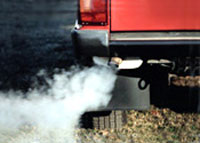
The Australian government is proposing regulations to cut tailpipe emissions from all new vehicles as much as 90%, which raises questions regarding the future of Ford Motor Co. of Australia Ltd. and Toyota Motor Corp. Australia Ltd. engine plants.
Compared with the country’s current Euro 4 rules, the proposed new standards – Euro 5 (starting in 2012) and Euro 6 (beginning 2016) – would reduce a new vehicle's maximum emissions of hydrocarbon up to 50%, oxides of nitrogen up to 70% and particulate matter up to 90%.
Euro 5 and Euro 6 standards already have been adopted by the European Union.
“The draft-regulation impact statement I'm releasing lays out the costs and benefits of Australia following suit,” Transport Minister Anthony Albanese says. “While the draft RIS recommends their adoption, I would encourage all interested parties to provide their comments prior to the government making a final decision.”
The auto industry, environmentalists and consumers will have until early March to respond.
Albanese says although the air quality of Australia’s major cities has improved significantly in recent years, the increase in vehicles means the government must continually monitor standards and deploy new, more-effective technologies where possible.
“Australia's mandatory vehicle-emissions standards, together with stringent fuel-quality standards, are widely recognized as the most cost-effective way of improving urban air quality,” he says. “Both have been progressively tightened over the past 30 years.”

New regulations designed to reduce carbon-dioxide emissions from new vehicles will be the subject of a separate RIS, due for release early this year.
Federal Chamber of Automotive Industries CEO Andrew McKellar tells The Australian newspaper the government should consider emissions standards along with new regulations governing fuel standards.
“There is a direct link between vehicle emissions and the quality of fuel used,” he says. “Any evaluation of vehicle-emissions standards must also consider whether or not there is a need to mandate higher-quality (gasoline) in the Australian market.”
Meanwhile, The Australian says the federal government threw tens of millions of dollars at Ford Australia to persuade the auto maker to maintain its 6-cyl. engine plant in Geelong, Victoria. Ford in November reversed a decision to close the 82-year-old facility this year and said it would re-engineer the aging mill to meet Euro 4 standards.
“It is doubtful whether Ford would be willing to spend big money to upgrade the facilities,” the newspaper says.
“Likewise, Toyota has its local engine plant under review, signaling a shift to fully imported engines. The change in emissions standards might be the swing factor to effectively shut down car-engine production in Australia.”
With 83% of vehicles sold in Australia now made overseas, the government has little choice but to follow regulations imposed in other parts of the world, The Age newspaper says.




